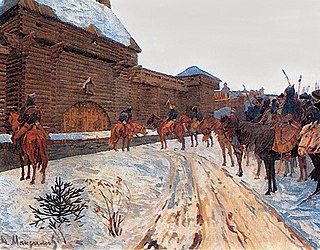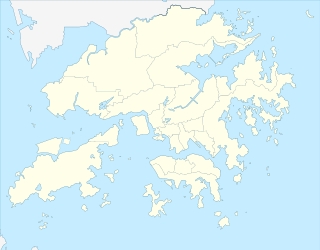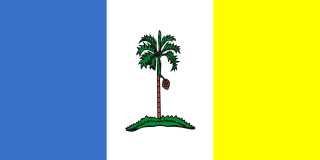 W
WAvraga is the steppe where the first nomadic capital of the Mongol Empire was located after Genghis Khan seized the territory from the Jurkin clan. Avraga was located at the confluence of the Kherlen and Tsenker River, in present-day Khentii province, Mongolia.
 W
WSack of Chernigov was part of the Mongol invasion of Rus.'
 W
WIe Wōji Chōchoku , also known by the Chinese-style name Shō Ken , was a prince of Ryukyu Kingdom. Sometimes he was called Prince Ie (伊江王子) for short.
 W
WNakijin Wōji Chōfu , also known by the Chinese-style name Shō Hitsu , was a prince of Ryukyu Kingdom. Sometimes he was called Prince Nakijin (今帰仁王子) for short.
 W
WThe dpon-chen or pönchen, literally the "great authority" or "great administrator", was the chief administrator or governor of Tibet located at Sakya Monastery during the Yuan administrative rule of Tibet in the 13th and 14th centuries. In the Mongol Empire the office of the dpon-chen was established in the 1260s and functioned for all practical purposes as the Tibetan government at the pleasure of the Mongol emperors of the Yuan dynasty, unlike the Sakya Imperial Preceptors (Dishi) who were active at the Yuan court.
 W
WThe Dr Sun Yat-sen Historical Trail was set up in November 1996 by the Central and Western District Council to commemorate the 130th birthday of Sun Yat-sen. It includes 16 spots in the areas of Central and Sheung Wan in Hong Kong, related to the life of Sun Yat-sen and other revolutionaries in the late Qing era. Originally the Sun Yat-sen Historical Trail had 13 markers; in 2001, it was renovated and renamed, and two spots were added to it. In 2018, the trail was further updated under a Revitalization Project, where artists were commissioned by the government to create art at each location.
 W
WFirozkoh, or Turquoise Mountain, is the lost capital of the Ghorid dynasty, in the Ghor Province of central Afghanistan. It was reputedly one of the greatest cities of its age, but was destroyed by Tolui, son of Genghis Khan, in the early 1220s after a siege and lost to history. Firozkoh was used as a summer capital, as the leadership of the Ghorid sultanate were semi-nomadic.
 W
WFour Four South Village, or Forty-Four South Village was previously a residential area in Taipei for the military personnel of the 44th Arsenal of the Combined Logistics Command and their dependents. Today it has been partially renovated and is home to model homes from its original use, cultural and creative stores, a restaurant, and occasional arts and crafts markets.
 W
WThe Hephthalite–Sasanian Wars were a series of conflicts between the Hephthalites and the Sasanian Empire.
 W
WSeveral heritage trails have been designed in Hong Kong:
 W
WThe Jewish presence in Taiwan began in the mid-20th century, and was never numerous. The first sizable presence began in the 1950s, when religious services were held in the United States military chapel, to which civilians also had access. There are currently two main entities for Jews in Taiwan, the Taiwan Jewish Community, and the Taipei Jewish Center.
 W
WThe Hong Kong 1956 protests, also known as Double Ten riots, were the result of escalating provocations between pro-Nationalist and pro-Communist factions in Hong Kong during Double Ten Day, 10 October 1956.
 W
WThe Hong Kong Act 1985 was an Act of the Parliament of the United Kingdom that made provision for the ratification of the Sino-British Joint Declaration that was signed on 19 December 1984 in Beijing that agreed to end British sovereignty and jurisdiction over the then British dependent territory of Hong Kong to the People's Republic of China after 1 July 1997. It was given Royal assent on 4 April 1985.
 W
WThe Khoshut Khanate was an Oirat khanate based in the Tibetan Plateau from 1642-1717.
 W
WKush was a satrapy of the Achaemenid Empire. The territory was conquered from the Kingdom of Kush.
 W
WMalacca was a British Crown colony from 1946 to 1957. It came under British sovereignty after the signing of the Anglo-Dutch Treaty of 1824, and had been part of the Straits Settlements until 1946.
 W
WMarshal of the Mongolian People's Republic was the highest rank in the Mongolian People's Army of the Mongolian People's Republic.
 W
WThe Siege of Moscow was part of Mongol invasion of Rus.
 W
WNose tombs are tombs that contain human noses or other body parts that were brought back to Japan as trophies during the Japanese invasions of Korea in the late 16th century.
 W
WObelisk Hill is a hill in southern Hong Kong. Canadian troops took positions there in 1941 in preparation for attacks from the Imperial Japanese military.
 W
WParadan or Paratan was a province of the Sasanian Empire. It was constituted from the present-day Balochistan region, which is divided between Iran, Pakistan and Afghanistan.
 W
WThe patron and priest relationship, also simply written as priest-patron or cho-yon is the symbolic relationship between a religious figure and a lay patron in the Tibetan ideology or political theory. "chöyön" is an abbreviation of two words: chöney, "that which is worthy of being given gifts and alms", and yöndag, "he who gives gifts to that which is worthy".
 W
WPenang was a British Crown colony from 1946 to 1957. It came under British sovereignty after being ceded by the Sultanate of Kedah in 1786, and had been part of the Straits Settlements in 1946. Together with Singapore, it became a Crown colony under the direct control of the British Colonial Office in London until it was incorporated into the Malayan Union.
 W
WQasr Al Muwaiji, or "Muwaiji Fort", is a fort in the central part of Al Ain in the Eastern Region of the Emirate of Abu Dhabi, the United Arab Emirates. It is noted as the birthplace of Sheikh Khalifa bin Zayed Al Nahyan, the current Ruler of Abu Dhabi and President of the United Arab Emirates, and where his father and predecessor, Zayed bin Sultan Al Nahyan, was based during his tenure as the Ruler's Representative of the Eastern Region of the Emirate. It was reportedly built in the early 20th century by Sheikh Khalifa bin Zayed bin Khalifa Al Nahyan, during the reign of his father.
 W
WThe Joint Communiqué of the United States of America and the People's Republic of China, also known as the Shanghai Communiqué (1972), was an important diplomatic document issued by the United States of America and the People's Republic of China on February 28, 1972, during President Richard Nixon's visit to China. The document pledged that it was in the interest of all nations for the United States and China to work towards the normalization of their relations, although this would not occur until the Joint Communiqué on the Establishment of Diplomatic Relations seven years later.
 W
WSino-British Joint Liaison Group or simply Joint Liaison Group was a meeting group formed in 1985 between the Governments of the United Kingdom of Great Britain and Northern Ireland and the People's Republic of China after signing of Sino–British Joint Declaration, a treaty for the transfer of sovereignty of Hong Kong from Britain to China. It was set up for liaison, consultation and the exchange of information to implement the Joint Declaration and make the transfer of Hong Kong Government in 1997 smooth.
 W
WTapur clan was a clan of Scythian people that migrated from Parthyene to central parts of southern territories of Caspian Sea during kingdom of Phraates I when Parthian Empire became strong during Phraates I, he attacked to Amard and defeated them. Then he forced them to leave southern fringes of Caspian Sea and replaced them with Tapur people. After this event, ancient Tapuria was established. These Tapuri clan furnished 1,000 cavalry for the battle of Gaugamela as Achaemenid Empire Army.
 W
WShōkichi Umeya (1868–1934) was a Japanese film promoter and producer who financially supported Sun Yat-sen's revolutionary activities over a period of nearly 20 years. He was the founder in 1906 of the early Japanese film production company M. Pathe.
 W
WThe Yenisei Kyrgyz Khaganate was a Turkic empire that existed for about a century between the early 9th and 10th centuries, around the start of the Mongol Empire. It ruled over the Yenisei Kyrgyz people, who had been located in southern Siberia and Central Asia since the 6th century. By the 9th century, the Kyrgyz had asserted dominance over the Uyghurs who had previously ruled. The empire was established as a khaganate from 840–1207. The khaganate's territory is now part of Kyrgyzstan, Kazakhstan, Russia, China and Mongolia.